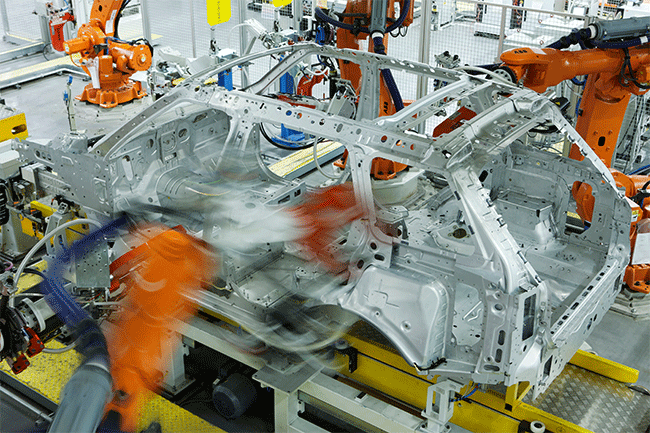Latest News
August 25, 2014
Jaguar Land Rover (JLR) put its luxury Range Rover sports utility on a diet. The effects were so impressive that the auto OEM took home the 2014 Enlighten Award, an accolade bestowed by simulation software provider Altair in collaboration with the Center for Automotive Research (CAR).
The Altair Enlighten Award, the automotive industry’s first award program that acknowledges innovations in vehicle light weighting, was handed to JLR in acknowledgement of its accomplishments in the lightweight architecture design of the newest Range Rover vehicle. Thanks to JLR’s holistic approach to CO2 reduction, the new Range Rover body achieved a 40% weight savings, weighing in at 658 pounds compared to its previous body weight of 1,096 pounds.
What’s distinct about JLR’s light weighting efforts is that it pursued a holistic approach throughout the entire vehicle development process, according to Dave Mason, senior vice president, Global Automotive for Altair. Specifically, JLR linked its strategy of weight reduction in the body and chassis systems to powertrain and related secondary weight savings, while at the same time, maximizing its use of recycled materials and lowering energy consumption during the manufacturing stage.
“They won this year because they did everything we talk about in terms of what’s important to do when light weighting vehicles and that shows in the results of the Land Rover,” he explained. “They light weighted the body and chassis, matched it with an appropriately-sized power train and looked for as much secondary mass savings as possible. They also invested a lot in their simulation technology as well as in aluminum body structures.”
JLR was also aggressive in its use of simulation and optimization technology, with Altair serving as a strategic partner on the initiative, Mason says. The company was an early adopter of Altair’s OptiStruct optimization technology to help light weight components and it was also aggressive in changing design processes to take advantage of the simulation results.
JLR was able to achieve its impressive weight targets, in part, through the use of lightweight metals like aluminum and magnesium along with composites and thermoplastics. The changes shaved 154 pounds off the chassis and about 287 pounds off the powertrain components, according to JLR officials.
In support of the light weighting effort, JLR developed new CAE techniques to help simulate crash, durability, noise, vibration, and harshness attributes for the new Land Rover. At the same time, new manufacturing simulation techniques were used to develop and refine new stamping, casting, and joining processes to support the lightweight vehicle structures. Because of these simulations, JLR was able to develop the vehicle model in the virtual world, minimizing incremental and costly physical development testing.
“JLR did a lot of work in the assembly process to reduce the cost impact of the new design and changed materials,” Mason says. “This innovative process won them additional points as well.”
Below is a video produced by JLR that explains its lightweighting initiative.
Subscribe to our FREE magazine, FREE email newsletters or both!
Latest News
About the Author
Beth Stackpole is a contributing editor to Digital Engineering. Send e-mail about this article to [email protected].
Follow DE







